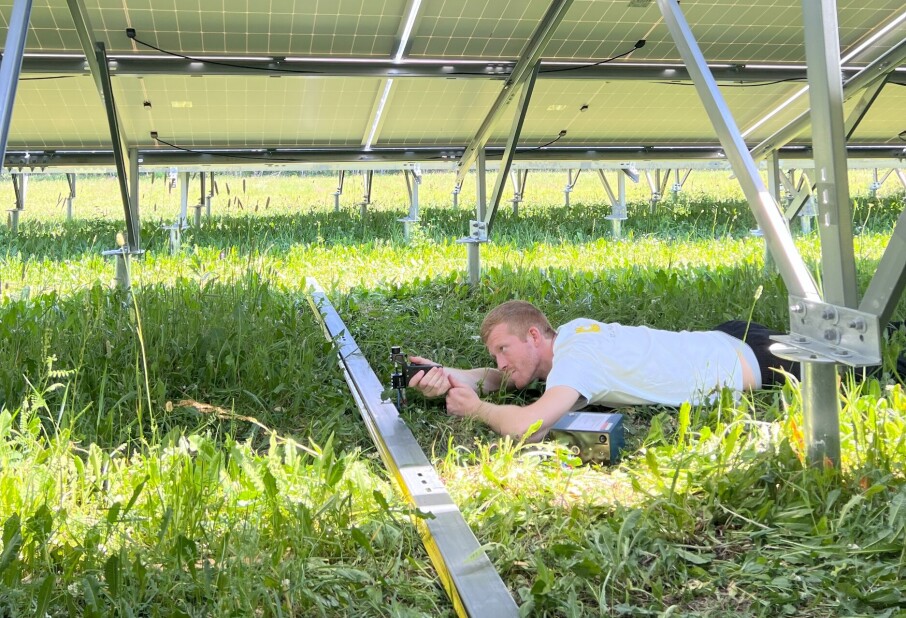
Researchers have identified four different types of intoxicated sexual assault
It might not have been rape in a legal sense, but it wasn't okay. So what was it then? Researchers have taken a closer look at sexual assaults that occur when partying and alcohol are involved.
Intoxicated sexual assaults are sexual assaults that happen at parties, in night clubs, or at after-parties, and they are the most common form of sexual assault, according to the researchers.
“We’ve looked at the somewhat chaotic situations where both parties have been drinking, in contexts that are often charged with a sexual atmosphere, and where it’s expected that things might happen between people,” sociologist Kari Stefansen explains.
“Sometimes there is coercion and exploitation that would legally be considered rape, while other times it’s unclear,” she says.
Colleagues Gerd Marie Solstad and Rikke Tokle from OsloMet joined Stefansen in interviewing 40 women about their sexual assault experiences.
24 of the women had been subjected to a total of 34 different intoxicated sexual assaults at parties.
Most viewed
No content
What did I do, and did I want it?
Two underlying questions were recurrent among the women who shared their stories with the researchers.
The first was about their degree of participation: What did I do in the situation? What was my role?
The second question was about their degree of interest: Was I attracted to the situation or to him, and did I want it?
Based on the answers to these questions, the researchers have identified four different assault situations:
- Manipulative assault – no interest or participation. The assailant ensures that the victim ends up in a vulnerable situation by getting her drunk or drugging her and has sex with her when she is unable to express what she wants. These cases would probably fall under the criminal definition of rape.
- Opportunistic exploitation – possible interest, but no participation. Here, the victim is already in a vulnerable situation. She is at a party and has been drinking a lot. The assailant has not contributed to making her vulnerable, but exploits the fact that she is. She may have fallen asleep from all the alcohol and wakes up to someone having sex with her.
- Sexually violent effervescence – high degree of interest and participation. There's a party and both are drunk. There is mutual interest to begin with and the victim participates willingly at first. But suddenly the situation flips and the victim loses control. The assailant is self-absorbed and not aware that she no longer wants to.
- Scripted compliance – little interest, but participation. Here, the woman might have gone home with someone after a night out. She is drunk and disoriented and finds herself in a situation where she feels that sex is expected. She feels trapped by the situation and that she just has to go along with it. There is no physical coercion, but the woman often tries to show that she doesn’t want to continue by looking away or lying still.
Sex and social status
A theme that cuts across all categories is what the researchers call socio-sexual status.
“In general, most people want to have sex with someone who’s on the same level as themselves, someone they like, who's popular, well-regarded, and cool. Someone who might be able to raise their status in the local hierarchy among peers,” Stefansen says.
If the assailant has high status, is attractive and well-liked, then incidents become more ambivalent.
“You might have wanted to. It could have been okay in another context and in a different way. Sex wouldn’t have been out of the question,” the sociologist says. “The kind of relationship between the victim and the assailant is a factor, as well as how they’re viewed by those around them.”

The friends of a then 16-year-old girl, who woke up to find a popular and attractive boy having sex with her after she had fallen asleep at a party, thought that what had happened wasn’t such a big deal and that she didn’t need to be distressed about having had sex with this boy. He was a nice guy.
Other research has also pointed out that men and boys with high status have some protection against accusations of violations and abuse, according to Stefansen.
“But it's important to keep in mind that they also have a different vulnerability to ending up in situations where they violate another person. It affects the dynamics in sexual situations when one person has a higher status than the other. Knowing what you really want can become more difficult, and you might feel that you can’t back out from something you initially wanted.”
Would never have had sex with him
When assailants have lower socio-sexual status, it is clearer that what happened is a violation. These assailants were often described as ugly, disgusting, old, and creepy.
“In the manipulative assault category, the very fact that the assailant manipulates the situation, like actively pouring drinks for the victim, becomes a sign that he’s of lower status,” Stefansen says. "There’s something pitiful about this character to begin with. If you were popular and attractive, then you wouldn't have to do those things.”
One of the women, for example, met someone who kept plying her with drinks at the hotel where she was staying with her friend's family. She was not interested in him at all, but became terribly drunk and was dragged to his hotel room where he had sex with her.
“She expressed her lack of interest clearly in the interview. She was young, slim, and pretty, and he was a 23-year-old fat guy she would never have been interested in. That confirmed that it was an assault that she had no active role in,” Stefansen says.
The boundary-crossing grey areas
Stefansen and her colleagues believe we need a different language than just legal language to talk about sexual assault.
“The criminal law perspective reduces the question to whether an act was rape or not. We need a language for everything that is a bit more difficult to grasp. We’ve tried to outline a more nuanced picture of what young women experience and how they struggle to understand what has happened,” she says.
Stefansen hopes the research can be helpful to those who are exposed to unclear situations, and to those who work with young people.
“Perhaps this is a reminder not to jump so quickly to the question of whether an act was rape or not, but rather to listen and understand young people's experiences,” the sociologist says.
Unethical sex is one term that researchers use. While rape is a form of unethical sex, a wide range of other actions also fall under this category, stretching from non-consensual extremes to consensual sexual activities.
“These terms might serve as thoughtful tools, especially for young people. It’s good to know that violations can happen in numerous ways, and the concept of unethical sex can be quite useful. I think young people can understand that too. You can find yourself in a situation where you perform actions that represent unethical sex, and you can be subjected to it," Stefansen says.
More sexual violence, or more people reporting it?
Stefansen is also involved in the UngVold – Trends in Exposure to Violence study which was conducted in 2007, 2015, and 2023 by the Norwegian Social Research Institute NOVA at OsloMet.
This year's report showed a significant increase in sexual violence among children and young people.
About one in four adolescents in the study had been exposed to at least one incident of sexual violence during their upbringing. The extent of almost all forms of sexual assault measured in the survey has doubled from 2015 to 2023. Girls were about four times as vulnerable as boys.
“Here we have a void in the research. We can see that the numbers are increasing, but we don't quite know what that increase means. In the report, we concluded that we believe the rise in numbers is about increased awareness and an increased willingness to report sexual assaults. This is more likely than there being such a dramatic increase in this type of abuse,” Stefansen says.
An important study
Criminologist Sébastien Tutenges, an associate professor at Lund University, has researched social problems related to drugs, alcohol, and nightlife for more than 20 years.
This year, he published the book Intoxication, in which he explores why people across cultures regularly gather to get drunk. Part of the answer is that these gatherings are an almost religious experience, where people connect with others and feel part of a larger whole.
But intoxication also has a darker side.
“Millions of women worldwide have been subjected to sexual assaults. Many of these assaults occur in festive settings where alcohol or other drugs are consumed,” Tutenges says. “Stefansen, Solstad and Tokle's study is an important contribution to understanding and explaining how survivors of sexual assaults try to make sense of the 'madness' they have been subjected to."
The study introduces new concepts for different types of assaults and sheds light on how status hierarchies affect assault situations, Tutenges summarises.
He believes this knowledge is important in the fight to understand and combat abusive behaviour.
Reference:
Stefansen et al. What Happened to Me? Ambiguity and Surety in Narratives of Intoxicated Sexual Assault, Sociology, 2023. DOI: 10.1177/00380385231209243
———
Translated by Ingrid P. Nuse
Read the Norwegian version of this article at forskning.no
































